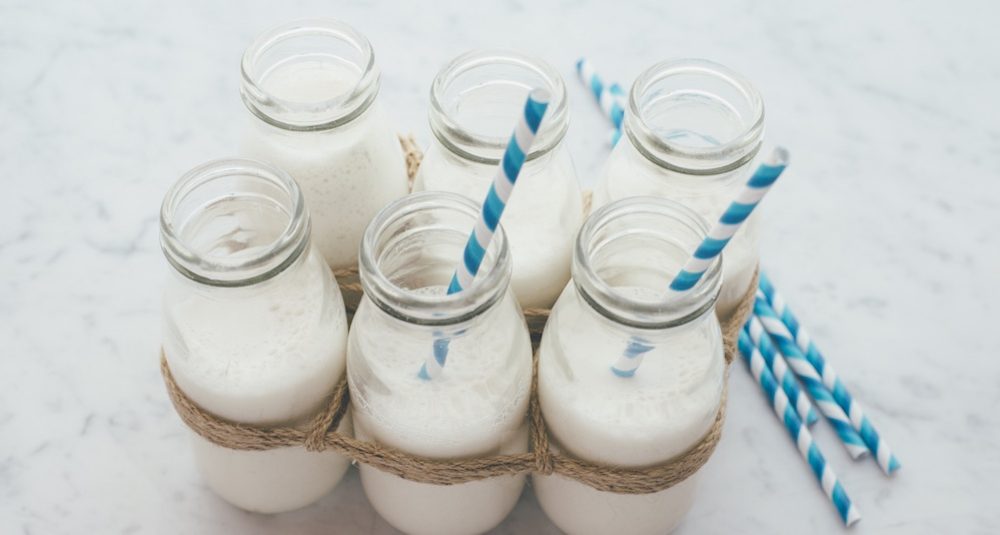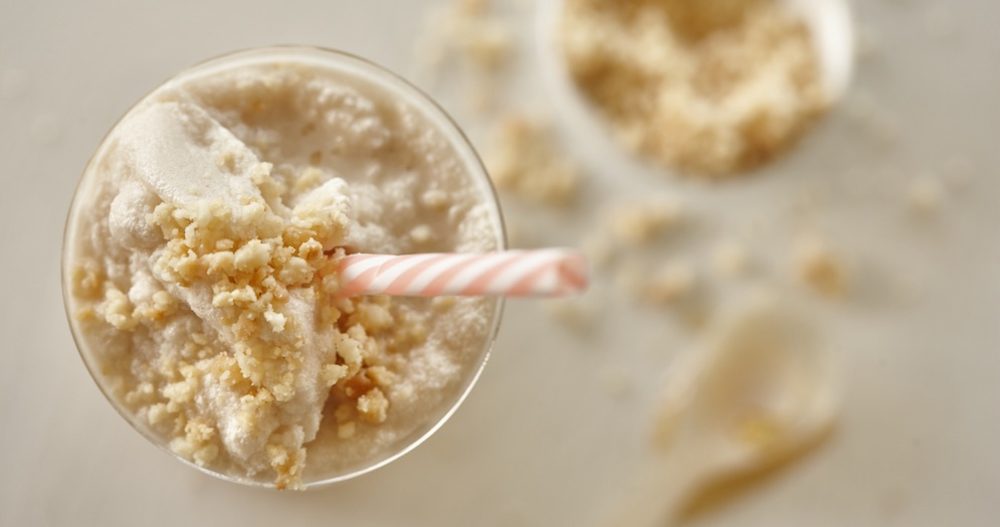
The global rise of the dairy alternatives market in recent years has been good news for a host of producers, both nut and otherwise, as manufacturers have re-imagined the dairy category, and consumers have embraced a new wave of innovation.
We first examined this trend back in 2015, when the choice of non-dairy milk products had started to rise noticeably, and macadamia milk was appearing on mainstream Australian supermarket shelves for the first time.
Since then, the explosion of activity in the non-dairy milks segment has continued and spread to numerous other dairy dominated categories as well, including yoghurt, ice cream and cheese. It’s a shift spurred on by a host of drivers including consumers’ rising interest in health, the environment and animal welfare, and a move among millennials to non-dairy plant-based proteins 1.
Major Australian macadamia supplier Green & Gold recently announced the results of trials examining the efficacy of macadamias in dairy alternative product development. Here we dive back into the dairy alternatives space to see what trends are dominating which markets, share the three new products that Green & Gold successfully trialled using macadamias in place of dairy, and reveal the 5 key outcomes to emerge from the accompanying sensory research.
Global growth set to continue
Statistics confirm the story that a walk down many a supermarket aisle will tell: the demand for dairy alternatives is stronger than ever, with growth predicted to continue for the foreseeable future.
The global dairy alternatives market grew an average of 17% annually between 2013 and 2017 2, and was valued at more than USD $15.8 billion in 2018. This figure is set to tip $38 billion by 2024, with growth predicted to continue at a rate of 10-14%.
The US dairy alternatives market experienced substantial growth of 50% in 2018, and now represents 15% of the overall dairy market. Non-dairy cheese increased by 43%, while non-dairy yogurt and non-dairy creamers grew 55% and 131% respectively in 2019. While soy milk remains the most consumed plant-based milk globally, in 2018 demand for almond milk outstripped that of soy milk in North America for the first time.
Asia Pacific is the fastest growing region in the global market, forecast to grow at 15% CAGR from 2019 to 2024. Asia is currently leading sales value of the dairy alternative drinks sub-category, which reflects growth in less developed markets such as China, and high-value offerings in developed markets like Japan 3.
Europe is leading the new product development (NPD) share in the dairy alternative drinks subcategory 3 with manufacturers turning to innovative flavours and varieties to meet demand in this market.
Demand for dairy alternatives is growing in Latin America, particularly in Brazil, Mexico and Argentina. This is being driven by consumers turning to plant protein as an answer to diabetes and obesity problems, as well as the fact that a significant portion of the population is lactose intolerant 4.
Trend extends to multiple categories
Growth is being witnessed across multiple non-dairy subcategories, including milk, ice cream, spoonable yoghurt, and cheese.

The global plant-based beverages market was valued at around USD $11.16 billion in 2018 and is predicted to generate USD $20.25 billion by 2025, at a CAGR of around 12% from 2019 to 2025. NPD growth is higher in dairy alternative drinks compared to dairy drinks, with CAGR from 2013 to 2018 coming in at 13.1% and 8.8% respectively, with even wider gaps recorded for the ice cream / frozen yoghurt and spoonable yoghurt categories, shown below.

Considerable innovation is occurring in the cheese subcategory, with small artisan producers and mainstream manufacturers launching cheese products that use everything from soy, nuts and seeds through to beans, oats and even potatoes in place of dairy.
The growing popularity of dairy alternatives has even sparked innovation in the tea category, with Lipton recently launching a specially blended black tea in Australia specifically for dairy free milks.
But perhaps the biggest indicator of just how powerful the shift to non-dairy alternatives is comes from dairy manufacturers themselves, with several large multi-national players embarking on a diversification strategy that has seen billions of dollars spent on acquiring or investing in operators with plant-based brands and capabilities. Examples include Danone’s acquisition of WhiteWave Foods, the parent company of numerous vegan brands, Nestle’s acquisition of Terrafertil, and Coca Cola’s acquisition of soy-based RTD Latin American beverage brand AdeS.
The untapped potential of macadamias
The dairy alternatives movement has seen some fabulous examples of product innovation involving macadamias appear across multiple markets.
Yet among countless soy and almond based products, cashew yoghurt, pecan milk, and various vegan cheese and ice cream options, it’s hard to shake the sense that macadamias are under-leveraged in the dairy alternatives space.
While brands such as Milkadamia and Suncoast Gold have gone from strength to strength with their macadamia milk products, macadamia innovation in dairy alternatives beyond milk has been more limited.
Australian macadamia supplier Green & Gold has set out to change this, unveiling a new program to pioneer food ingredient opportunities. The company has partnered with a leading product development laboratory to deliver the first phase of its initiative which tested macadamias as a dairy alternative in a range of different products.
According to Green & Gold CEO Brian Loader, the results of the tests demonstrated tangible business possibility while delivering to consumer demand for healthy products.
“The recent EAT-Lancet commission findings reported that 40% of the recommended daily protein calorie requirement should come from nuts,” he said.
“It’s estimated that the consumption of nuts needs to double by 2050, and while macadamias are currently small in supply compared to other nuts, this is changing rapidly. Macadamias have demonstrated the largest supply availability growth of any nut variety in the last 10 years at 57%. Higher volumes of macadamia supply avail the scale to develop new products.”
Brian believes it’s only a matter of time before macadamias take their place alongside other nut counterparts in an array of product categories, including dairy alternatives.
“The health necessity of plant-based eating as well as its intersection with better preserving our planet is being understood and adopted. Many of our customers are strategically focussed to reorient their business in support of plant-based foods,” he said.
Putting macadamias to the test as a dairy alternative
Green & Gold’s trials examined whether macadamias retain their creamy textural advantage as a liquid when used as a dairy replacement. The team successfully developed three products using macadamias in place of dairy – mushroom soup, mango smoothie and yoghurt – bringing to life the potential of alternative macadamia applications.
Five key findings were revealed.
1. Macadamias have very high and stable emulsification properties, which mean little to no product separation occurs, and the creamy texture is preserved
2. Macadamias’ neutral flavour makes way for a variety of uses – sweet, salty an otherwise. They were also found to be an excellent flavour carrier.
3. Focus group participants could not tell that macadamias were used instead of dairy milk for the SOUP from both a taste and texture perspective
4. Focus group participants could not tell that macadamias were used instead of dairy milk for the SMOOTHIE from both a taste and texture perspective
5. Participants could taste that macadamias were used in the yoghurt, which for many was a positive. The YOGHURT texture resembled that of dairy yoghurt.
For Green & Gold, the results are extremely encouraging.
“We have long believed in the potential of macadamias,” said Brian Loader.
“The Green & Gold team is infinitely buoyed by this initial foray into how the future looks for how macadamias are consumed.
For more details of the testing, please contact Green & Gold Macadamias or Lynne Ziehlke.
Top picks: 5 of the best new macadamia dairy alternative products of 2018/19
QIAQIA DAILY NUT DRINK
Where: China
What: Cartons of 12 single-serve 240ml cans of nut drink made from 6 nut varieties including macadamias.
FRILL THE FROZEN SMOOTHIE: NUTTY CARAMEL
Where: United Kingdom
What: A unique blend of roasted macadamias, peanuts and hazelnuts, churned with chickpeas and coconut cream, to create a velvety vegan frozen smoothie in a 500ml cardboard tub.
KIKKOMAN TOUNYU SOY MACADAMIA DRINK
Where: Japan
What: A soybean beverage blended with macadamia nut paste creates rich and creamy taste, ideal as a snack or dessert. It can also be enjoyed frozen as a dairy free ice treat.
MILKADAMIA CREAMERS Where: USA
What: A range of creamers made from raw macadamia and coconut cream and available in Macadamia Fudge, Vanilla and Unsweetened Vanilla. Ideal for adding a flavour twist to coffee, they can also be used as a base for other beverages and desserts.
TYNE CHEASE MACADAMIA TRUFFLE
Where: United Kingdom
What: A gourmet delicacy produced by vegan cheese specialists that combines the unique flavour and texture of macadamias with a touch of white truffle oil.

Non-linked sources:
1. Innova Market Insights, Cheese Alternatives A Melting Pot of Innovation, May 2019
2. Innova Market Insights, Briefing Series: Top 10 Trends 2019, January 2019
3. Innova Market Insights, Dairy Alternative Drinks Subcategory Report H1 2018, September 2018
4. Innova Market Insights, Latin America: Plant Based Dairy, April 2019


